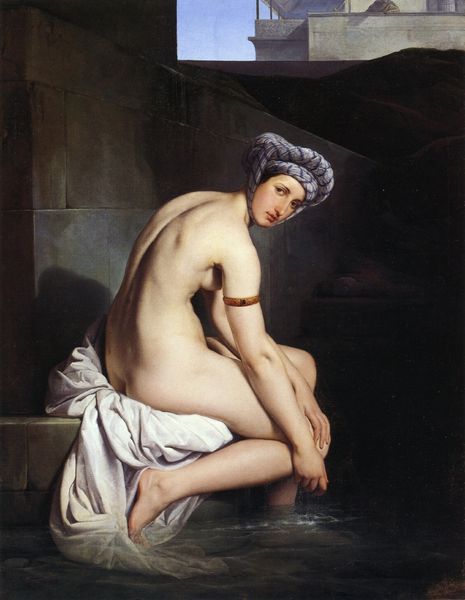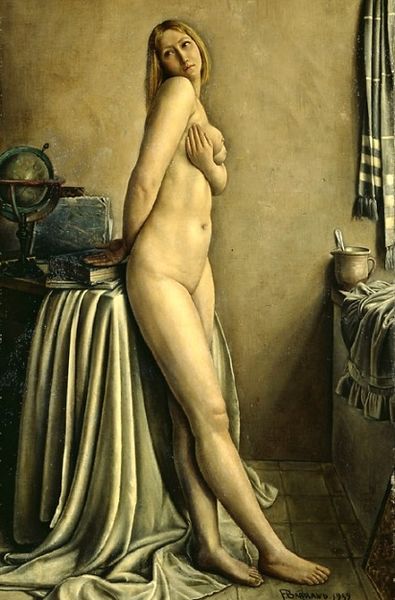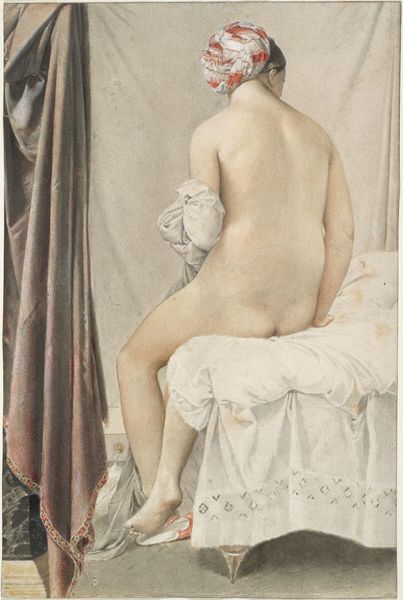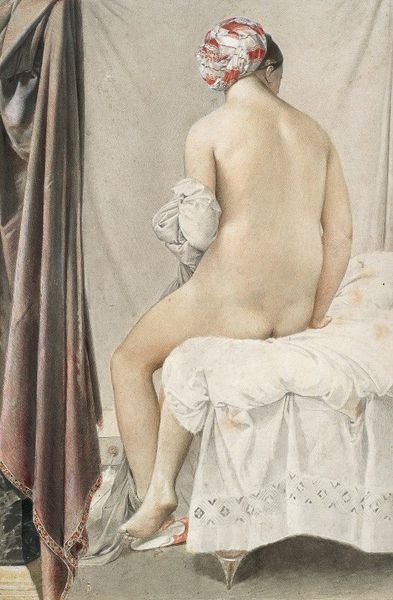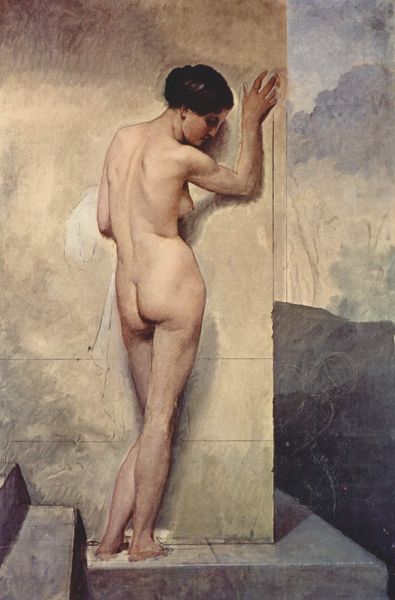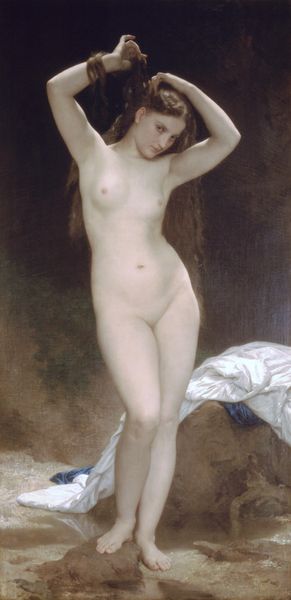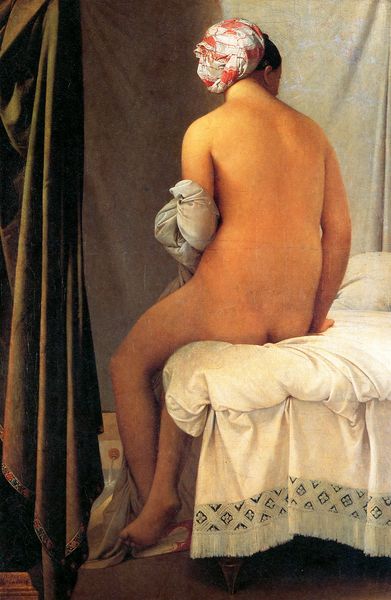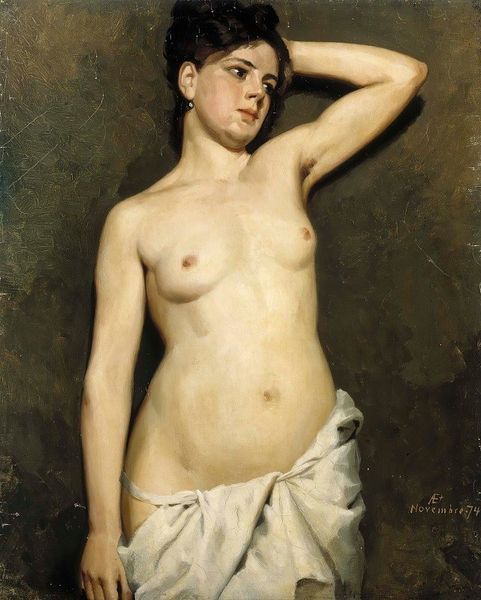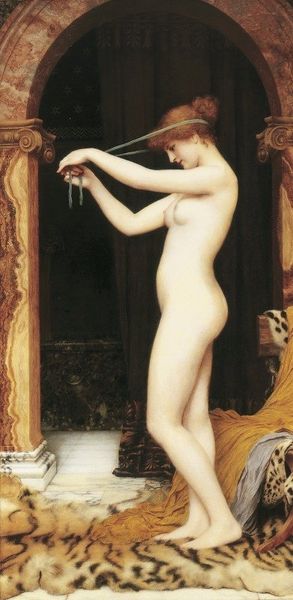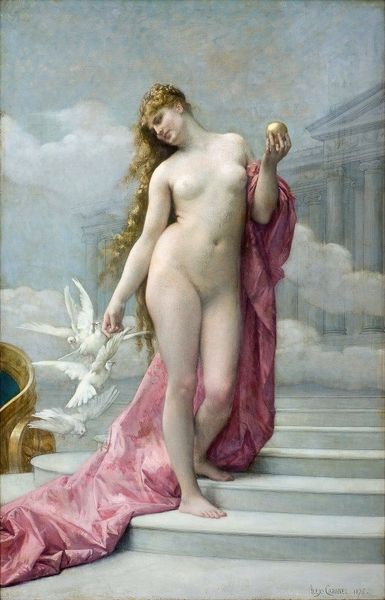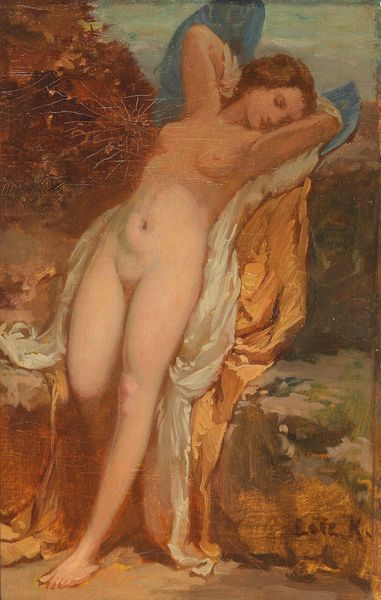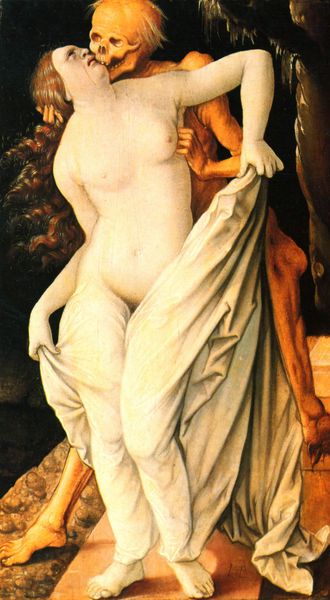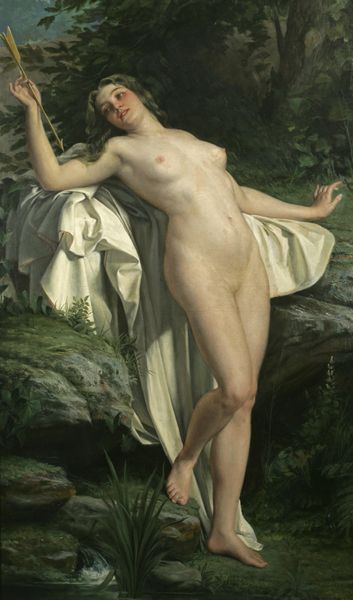
Dimensions: 183 x 137 cm
Copyright: Public domain
Editor: Here we have "Ballerina Carlotta Chabert as Venus" by Francesco Hayez, created around 1830 using oil paint. The dancer's nude figure strikes a pose, her skin pale against the darker background. There's almost a statuesque quality, very idealized. What's your take on this? Curator: It's fascinating how Hayez uses the figure of a ballerina to embody Venus, a goddess deeply embedded in our cultural consciousness. This work exists in the turbulent period of Italian nationalism, and it is useful to view it within that socio-political framework. How do we understand a public figure like a Ballerina, and their relationship to virtue, as expressed through art? Note the idealized and sensualized Neoclassical style of the female nude, a nod to artistic and political authority through emulation of classical ideals. Editor: So you're saying it’s not just a pretty picture, it is a claim? Curator: Exactly. The nude female figure has historically been charged with a myriad of meanings. A key detail here is her location: she appears to be half in and half out of a shallow bath. The subject stands against the backdrop of an allegorical landscape, a classical signal toward authority. Hayez seems to use Carlotta Chabert as a medium for communicating certain societal virtues by connecting her figure to a classical system. Editor: It’s interesting to think about how her role as a ballerina, a public figure, adds layers to the representation of Venus. Did this painting receive any kind of criticism when it was made? Curator: Oh, absolutely. While Neoclassical style still held sway, there was also a growing call for art that reflected contemporary life, not just mythological themes. Furthermore, depictions of nudes, especially in the context of public figures, were always subject to scrutiny, raising questions about morality and the role of art in society. So, it really highlights the push and pull of artistic and social values at the time. Editor: That makes me think about how art always reflects the society it was made in, not just the artist’s individual ideas. I had never thought about Italian nationalism in this work, thank you. Curator: Glad to illuminate it. Every artwork is always so much more than the pure image and immediate sensation when the cultural context comes to light!
Comments
No comments
Be the first to comment and join the conversation on the ultimate creative platform.
